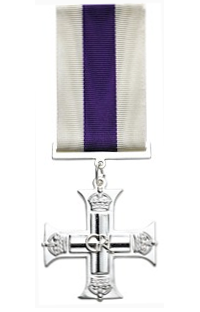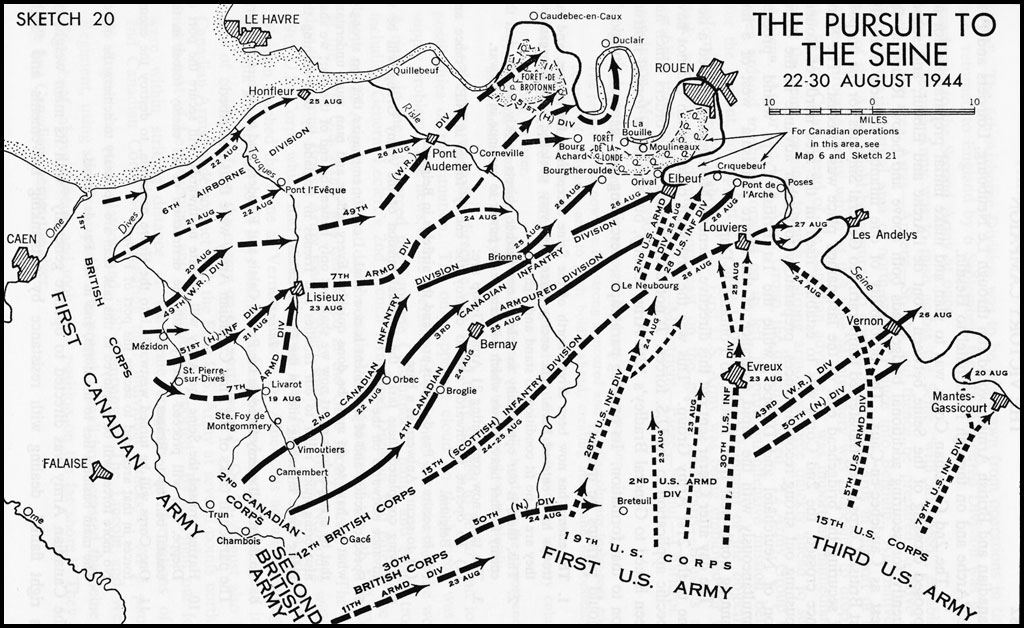The Engineers of the 4th Canadian Armoured Division had been in action since the beginning of August 1944. They had supported the advance along the Caen-Falaise Road and contributed to the closing of the Falaise Gap. The fight had been difficult. Dozens of sapper officers and men killed and wounded, half-tracks and trucks destroyed by enemy fire and artillery, and many stops and starts along the way. In more than one instance, the sappers found themselves pinned down waiting for follow-up infantry for relief. Bridges and fords were built; some bridges set-up for demolition to trap retreating Germans; and roads were cleared of rubble, abatis, mines and the rotting bodies of thousands of men and horses. By the 23rd of August, the Battle of Normandy was in its final days and the First Canadian Army now turned its attention to completing the destruction of enemy forces between the sea and the west bank of the Seine, after which it was to cross the Seine and advance on an axis from Rouen towards Ypres.
The 8th Field Squadron was in Trun when they were assigned tasks involving route clearance and bridging. Troop commanders pushed forward with their reconnaissance parties and found diversions, created some fords and threw up a number of Bailey bridges across ditches to keep the advance going forward. Meanwhile, after an extensive reconnaissance by the squadron officers, the CRE decided to cross the River Risle at Fontaine, where a partially demolished bridge was passable for a few vehicles.
1 Troop, 8th Field Squadron, under Lieutenant Ward, first opened a diversion around the damaged bridge and after a detailed reconnaissance on the enemy side, started the construction of a 90’ Double-Single Bailey nearby before the infantry arrived on site. There were a few armoured cars on the site. Despite the mortar fire, on the site, work was continued until the bridge was almost finished and the infantry arrived to form the bridgehead. This was the only crossing on 2 Canadian Corps front at the time. Lieutenant Ward counted 600 vehicles crossing his bridge and diversion in one hour. The 3rd Canadian Infantry Division reconnaissance crossed early and rest crossed after the 4th Canadian Armoured Division had led the way.
Lieutenant John Leon Ward was awarded the Military Cross for his actions.
John Ward was born in Toronto, Ontario and spent most of his life there. During the Battle of the Scheldt, on 21 October 1944, while pulling a wounded man out of a minefield, he too stepped on mine and lost a leg. Sapper Charlie Johnstone, in an attempt to rescue the wounded soldier and Lt. Ward was killed. John Ward died in Toronto in 1968. He was 55 years old.
Lieutenant Ward, a Troop Commander for 8 Canadian Field Squadron, was detailed to reconnoiter for possible crossings over the River Risle on 24 August. After reconnoitering of entire divisional front he chose Fontaine where there was a demolished bridge as the most suitable crossing. Realizing the necessity for a speedy crossing, and although there was no infantry bridgehead, he immediately began work under enemy mortar fire on the demolished span. He was successful in repairing it sufficiently to get a bulldozer across on it and ramped down and filling in the gap, thus making a diversionary route which enabled the infantry and armour to begin crossing by midnight with a minimum of delay. Bridging equipment was brought forward in the early hours of the morning and by 0830 hours 25 August Lieutenant Ward had completed a Bailey bridge which enabled the division to maintain its rate of advance. This officer by his drive, initiative, leadership coupled with his coolness under fire was responsible for maintaining the advance of the division.

